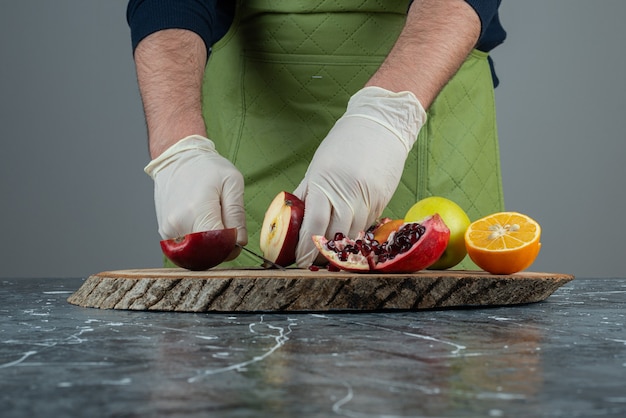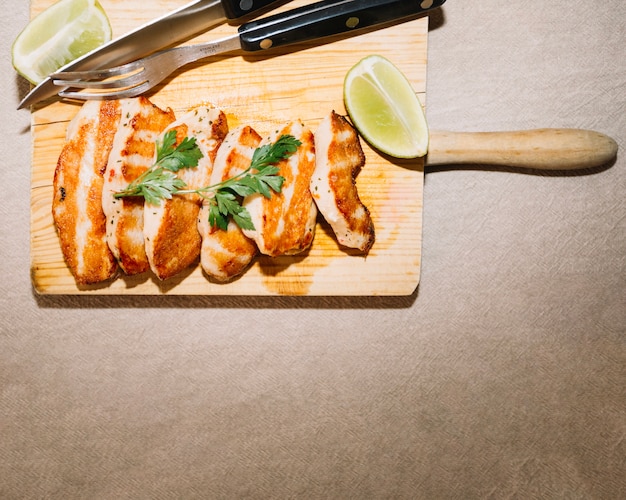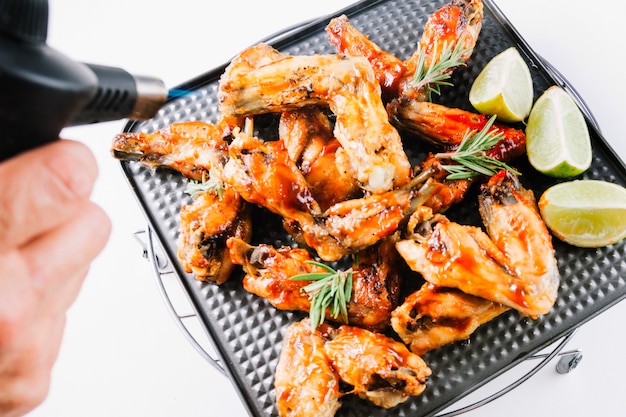The aroma of fresh seafood, the anticipation of a magnificent feast, the sheer joy of cracking open a juicy king crab leg – it's a culinary experience that truly captures the essence of a celebratory meal. But navigating the world of king crab can feel daunting, especially if you're a novice. Fear not, dear reader, for I'm here to guide you through the glorious journey of preparing and cooking these crustacean giants, transforming your kitchen into a haven for seafood lovers.
(Part 1)
Setting the Stage: The All-Important Selection

Like any grand culinary adventure, the first step is choosing the right ingredients. The quality of your king crab legs will directly impact the final flavour and texture, so let's explore the different options and what to look for:
Fresh or Frozen: The Great Debate
fresh king crab legs are a true delicacy, boasting a vibrant red hue, a crisp texture, and a wonderfully fresh scent. They're the dream for those seeking the ultimate taste of the sea. However, finding fresh crab legs can be a challenge outside coastal areas, and they have a shorter shelf life.
frozen king crab legs offer a fantastic alternative, readily available and boasting a longer shelf life. They can be just as delicious as fresh ones, provided you choose them carefully. Look for legs that are properly frozen, free from ice crystals, and packed by reputable suppliers.
The Importance of Size and Weight
King crab legs come in a variety of sizes, from dainty little fellas to behemoth claws that could rival your forearm. The size and weight determine the price, but don't be swayed by the largest ones. A 1-2lb leg offers a great balance of price and yield, providing ample meat without breaking the bank. If you're feeling adventurous, try mixing it up with a few different sizes for a more dynamic culinary experience.
Unveiling the Secrets: A Look at Appearance
The appearance of your king crab legs can offer valuable clues about their freshness and quality.
Fresh Legs: Look for bright red, shiny legs that are firm to the touch. Avoid any that have a dull colour, a slimy texture, or any signs of damage. A fresh, unfrozen leg should have a mild, sweet smell.
Frozen Legs: While they might not have the same vibrant hue as fresh legs, they should still be firm and free of ice crystals. If they have a strong or fishy odour, it's best to avoid them.
(Part 2)

Preparing for Battle: Prepping Your Crab Legs

Now that you've got your magnificent king crab legs in hand, it's time to prep them for the cooking stage. This step is crucial, as it ensures your crab is cooked to perfection and reveals its full flavour potential.
Thawing: A Gentle Approach
If you've chosen frozen crab legs, you'll need to thaw them properly before cooking. Never thaw them at room temperature, as this can lead to bacteria growth.
Refrigerator Thawing: This is the most recommended method, taking about 12-24 hours for complete thawing. Simply place the legs in a sealed container or wrapped in plastic wrap and allow them to thaw slowly in the refrigerator.
Cold water bath: If you're in a rush, you can use a cold water bath. Submerge the legs in a bowl of cold water, changing the water every 30 minutes or so. This method will take around 3-4 hours for a good thaw.
Cleaning: A Quick Rinse
While frozen crab legs are often pre-cleaned, it's a good idea to give them a quick rinse before cooking. This will help remove any excess ice, debris, or lingering flavour from the packaging.
Splitting the Legs: Unlocking the Meat
For easier cooking and eating, especially when dealing with whole legs, splitting them is a good idea.
1. Identify the "Knee" Joint: This is the natural bend in the leg where the meat is usually the most substantial.
2. Cut Through the Joint: Make a firm cut through the joint, carefully separating the leg into two pieces. Use a sharp knife or a good pair of kitchen shears for this task.
3. Remove Excess Shell: Optional, but removing the shell along the length of the leg can make cooking and eating more streamlined. However, if you prefer to leave it on, that's perfectly fine!
(Part 3)
Cooking Methods: Unleashing the Flavours
Now for the fun part! There are numerous ways to cook king crab legs, each with its own unique flavour profile. From classic steaming to adventurous grilling, there's a method for every palate and occasion.
Steaming: The Gentle Path to Deliciousness
Steaming is the most traditional and arguably the best way to cook king crab legs. This method retains the natural flavours and succulent texture, revealing the true essence of the crab.
1. Prepare Your Steamer: Fill the bottom of your steamer with about an inch of water. Add aromatics like lemon slices, bay leaves, or a splash of white wine for a touch of extra flavour.
2. Arrange the Legs: Place the crab legs in a single layer within the steamer, ensuring they don't overcrowd the space.
3. Cook Until Tender: Steam the legs for about 10-15 minutes, depending on their size. A good rule of thumb is to cook until the meat is opaque and flakes easily when you gently pull on it.
Boiling: A Simple and Efficient Approach
Boiling is a simple and efficient method, perfect for those short on time or looking for a straightforward approach.
1. Fill a Large Pot: Fill a large pot with enough water to cover the crab legs completely.
2. Add Aromatics: Enhance the flavour profile by adding a few bay leaves, black peppercorns, or a couple of sprigs of fresh thyme to the pot.
3. Boil the Legs: Bring the water to a rolling boil, then carefully add the crab legs.
4. Cook Until Tender: Boil the legs for 8-10 minutes, or until the meat is cooked through.
Grilling: A Smoky Adventure
For a smoky, flavour-packed experience, consider grilling your king crab legs.
1. Preheat Your Grill: Heat your gas or charcoal grill to medium-high heat.
2. Prepare the Legs: If using whole legs, split them first. Lightly coat them with melted butter or your favourite grilling sauce for extra flavour.
3. Grill for a Few Minutes: Place the crab legs directly on the grill and cook for about 3-5 minutes per side, or until the shell is slightly charred and the meat is cooked through.
Baking: Oven-Baked Perfection
Baking is a great option for larger batches of crab legs, allowing for even cooking and a touch of warmth.
1. Preheat Your Oven: Heat your oven to 400°F (200°C).
2. Prepare a Baking Dish: Grease a baking dish with butter or cooking spray.
3. Arrange the Legs: Place the crab legs in the baking dish and drizzle them with melted butter or your favourite marinade.
4. Bake Until Tender: Bake the legs for 15-20 minutes, or until the meat is cooked through.
(Part 4)
Tips and Tricks: Elevating Your Crab Game
Now that we've explored the basics, let's delve into some tips and tricks to elevate your king crab leg cooking game. These little secrets can make a world of difference in the final result.
Keep it Simple: Letting the Crab Shine
Remember, the true beauty of king crab lies in its natural flavour. Resist the urge to drown it in a multitude of spices or sauces. A sprinkle of salt, a squeeze of lemon, and a pat of butter are often all you need to let the deliciousness shine.
The Art of Patience: Don't Overcook
Overcooked king crab meat can become dry and tough, a tragedy for such a delicate and succulent delicacy. Keep a close eye on the cooking time, and remember that it's always better to err on the side of undercooked than overcooked.
Essential Tools: Unlocking the Treasure
A good crab cracker is your best friend when it comes to extracting the sweet, juicy meat from the shell. These handy tools come in various shapes and sizes, so find one that feels comfortable in your hand and provides a good grip.
Butter: A Classic Pairing
Melted butter is a classic companion for king crab legs, adding richness, moisture, and a touch of decadence. Serve it on the side for dipping or drizzle it generously over the cooked legs.
Get Creative: Exploring New Flavour Horizons
While traditional methods are fantastic, don't be afraid to experiment with your own flavours and techniques. Try adding a splash of white wine, a sprinkle of herbs, or a dash of your favourite spice to the cooking water or marinade. The possibilities are endless!
(Part 5)
Serving Suggestions: A Feast for the Eyes and Palate
Your king crab legs are cooked to perfection, now it's time to present them in a way that's both visually appealing and satisfying.
The Power of Presentation
When it comes to serving king crab legs, presentation is everything. Create a stunning visual display that will make your guests drool with anticipation, setting the stage for a memorable meal.
The Classic Approach: Simple Elegance
A simple and elegant presentation is to arrange the cooked crab legs on a platter lined with a bed of fresh greens or a layer of crushed ice. Add some lemon wedges and a sprig of fresh dill for a touch of colour and visual appeal.
Beyond the Basics: Creative Serving Ideas
If you're feeling adventurous, try getting creative with your serving style.
King Crab Tacos: Shred the cooked crab meat and stuff it into soft tortillas. Top with your favourite taco toppings, such as shredded lettuce, salsa, and sour cream, for a delightful twist.
King Crab Pasta: Add the cooked crab meat to your favourite pasta dish, like linguine or spaghetti. Toss it with a simple garlic and olive oil sauce, or get fancy with a creamy alfredo sauce for a luxurious touch.
King Crab Salad: Mix the crab meat with fresh greens, cherry tomatoes, avocado, and a light vinaigrette. Top it with toasted pecans or a sprinkle of crumbled blue cheese for added texture and flavour.
Complementary side dishes: Harmonious Flavours
King crab legs are best served with simple side dishes that complement their delicate flavours.
grilled corn on the Cob: The sweet and smoky flavour of grilled corn goes beautifully with the richness of the crab, offering a perfect balance.
Roasted Vegetables: A medley of roasted vegetables, such as asparagus, broccoli, and bell peppers, adds colour and a delightful crunch to the plate, complementing the crab's delicate texture.
Caesar Salad: The creamy, tangy flavour of a Caesar salad is a classic pairing for king crab legs, offering a refreshing counterpoint to the richness of the crab.
(Part 6)
Wine Pairings: A Symphony of Flavours
No seafood feast is complete without a perfectly paired wine. Here are a few suggestions that will complement the delicate flavours of king crab legs, creating a harmonious culinary symphony.
White Wines: A Refreshing Contrast
Dry Riesling: This wine's bright acidity and delicate fruit flavours cut through the richness of the crab, offering a refreshing balance.
Sauvignon Blanc: The crisp acidity and herbaceous notes of Sauvignon Blanc provide a refreshing counterpoint to the crab, highlighting its delicate sweetness.
Chardonnay: A buttery Chardonnay with a hint of oak can complement the richness of the crab meat, creating a luxurious pairing.
Red Wines: A Subtle Harmony
Pinot Noir: A light-bodied Pinot Noir with fruity aromas and silky tannins pairs well with the subtle sweetness of the crab, creating a harmonious balance.
Gamay: This red wine from the Loire Valley has a light, refreshing character that complements the delicate flavours of the crab, offering a subtle and elegant pairing.
(Part 7)
Storage and Leftovers: Making the Most of Your Bounty
You've enjoyed a magnificent feast of king crab legs, but you're left with a few leftovers. Don't let them go to waste!
Storing Your Leftovers: Preserving the Flavour
Properly storing your leftover crab legs is essential to preserve their flavour and texture.
Refrigerate: Store the cooked crab legs in an airtight container in the refrigerator for up to 3-4 days.
Freezing: For longer storage, you can freeze the cooked crab meat. Remove the meat from the shells, place it in a freezer-safe container, and freeze for up to 2-3 months.
Using Leftover Crab: A Culinary Second Act
Crab Salad: Shred the leftover crab meat and mix it with mayonnaise, celery, onion, and a touch of lemon juice for a classic crab salad. Serve it on sandwiches, crackers, or lettuce leaves.
Crab Cakes: Combine the leftover crab meat with breadcrumbs, egg, and seasonings. Shape them into patties and pan-fry or bake them for delicious crab cakes. Serve with a lemon-butter sauce or tartar sauce.
Crab Dip: Mix the leftover crab meat with cream cheese, sour cream, and seasonings. Spread it on crackers or toasted bread for a flavourful and easy appetizer.
(Part 8)
FAQs: Your King Crab Questions Answered
You've got questions, I've got answers. Here are a few frequently asked questions about cooking and enjoying king crab legs:
Q: How do I tell if my crab legs are cooked through?
A: The best way to tell if your crab legs are cooked through is to check the meat. It should be opaque, firm, and flake easily when you gently pull on it with a fork. If the meat is still translucent or rubbery, it needs more cooking time.
Q: How do I get the meat out of the legs?
A: A good crab cracker is your best friend! Use it to crack the shell open, then carefully remove the meat with a fork or your fingers. You can also use a crab leg tool, which has a specialized fork for extracting the meat.
Q: Can I reheat cooked crab legs?
A: Yes, you can reheat cooked crab legs, but it's best to do so gently. You can reheat them in the oven, microwave, or on the stovetop. Avoid overcooking, as this can dry out the meat.
Q: How long does it take to cook a king crab leg?
A: Cooking times vary depending on the size and cooking method. Generally, steaming takes about 10-15 minutes, boiling takes 8-10 minutes, grilling takes 3-5 minutes per side, and baking takes 15-20 minutes.
Q: How do I know if my crab legs are fresh?
A: fresh king crab legs should have a bright red colour, a firm texture, and a mild, sweet smell. They should also be free of any slime or signs of damage.
And there you have it, a comprehensive guide to the glorious world of king crab legs! From selecting the perfect legs to serving them with flair, this guide provides everything you need to create a memorable seafood feast. So, grab your crab crackers, gather your loved ones, and get ready to experience the ultimate king crab adventure!
Everyone is watching

How to Cook Frozen Lobster Tails Perfectly: A Step-by-Step Guide
RecipesLobster. Just the word conjures up images of lavish meals, special occasions, and a taste of luxury. But let's...

Pigs in a Blanket Cooking Time: How Long to Bake for Perfect Results
RecipesAh, pigs in a blanket. Just the name conjures up images of those delightful little parcels of crispy pastry en...

Pork Fillet Cooking Time: How Long to Cook It Perfectly
RecipesPork fillet, or tenderloin as it's sometimes called, is a real favourite in our house. It's so versatile, and...

The Ultimate Guide to Cooking Delicious Frankfurters
RecipesLet's face it, we all love a good frankfurter. It's a classic, simple, and always satisfying. But let's be rea...

Wolf Meat Recipes: A Guide to Cooking Wild Game
RecipesLet's be honest, you don't see wolf meat at your local butcher shop every day. It's a bit of a wild card, but ...
